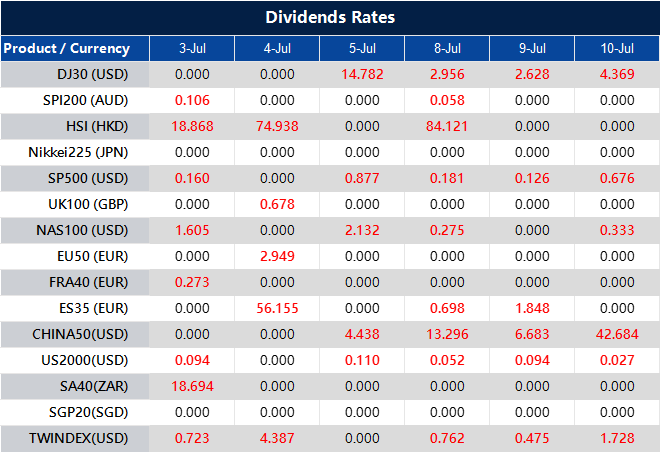Dividend Adjustment Notice – Dec 03 ,2025
Dear Client, Please note that the dividends of the following products will be adjusted accordingly. Index dividends will be executed …
 Back
Back
Dear Client,
Please note that the dividends of the following products will be adjusted accordingly. Index dividends will be executed separately through a balance statement directly to your trading account, and the comment will be in the following format “Div & Product Name & Net Volume ”.
Please refer to the table below for more details:

The above data is for reference only, please refer to the MT4/MT5 software for specific data.
If you’d like more information, please don’t hesitate to contact info@vtmarkets.com.

Trading Contracts for Difference (CFDs) carries a high level of risk and may not be suitable for all investors. The use of leverage can significantly magnify gains and losses and may result in losses exceeding your initial investment. Prior to engaging in CFD trading, you should ensure that you fully understand the risks involved, carefully consider your investment objectives, financial situation, and level of experience, and seek independent advice where necessary. Past performance is not indicative of future results. Please refer to our legal documents for a comprehensive overview of the risks associated with CFD trading.
General Disclaimer
The content on this website is provided for general informational purposes only and does not take into account your specific investment objectives, financial circumstances, or particular needs. Access to this website is made at your own initiative. VT Markets makes no warranties regarding the accuracy, timeliness, completeness, or relevance of any information provided and disclaims any liability for reliance placed on such information.
VT Markets does not offer its services to residents of certain jurisdictions, including, but not limited to, the United States, Singapore, India, Russia, and any jurisdictions listed by the Financial Action Task Force (FATF) or subject to international sanctions. The information on this website is not intended for distribution to, or use by, any person or entity in any jurisdiction where such distribution or use would contravene local law or regulation.
Regulatory Information
VT Markets is a global brand comprising multiple entities, each authorised and registered in various jurisdictions:
• VT Markets (Pty) Ltd is a Financial Services Provider (FSP No. 50865, Company Reg. No. 2015/072049/07), authorised and regulated by the Financial Sector Conduct Authority (FSCA) of South Africa. Registered address: 18 Cavendish Road, Claremont, Cape Town, Western Cape, 7708, South Africa.
• VT Markets (Pty) Ltd – Dubai Branch is licensed by the UAE Securities and Commodities Authority (SCA) under License No. 20200000299 as a Category 5 licensee, authorised to carry out regulated activities of Introduction and Promotion in the UAE. It is not authorised to provide brokerage services or execute client trades.
• VT Markets Limited is a Full-Service Investment Dealer (excluding Underwriting), authorised and regulated by the Financial Services Commission (FSC) of Mauritius (License No. GB23202269). Registered address: 40 Silicon Avenue, The Catalyst, Level 2, Suite 201, Ebene, Mauritius.
VTMarkets Ltd, incorporated in the Republic of Cyprus with Company Reg. No. HE436466 and Registered address: 160 Archbishop Makarios III Avenue, Floor 1, 3026 Limassol, Cyprus. This entity does not offer regulated financial products or provide trading services.
© 2025 VT Markets. All rights reserved.
Hello there 👋
Hello there 👋
Scan the QR code with your smartphone to start a chat with us, or click here.
Don’t have the Telegram App or Desktop installed? Use Web Telegram instead.


